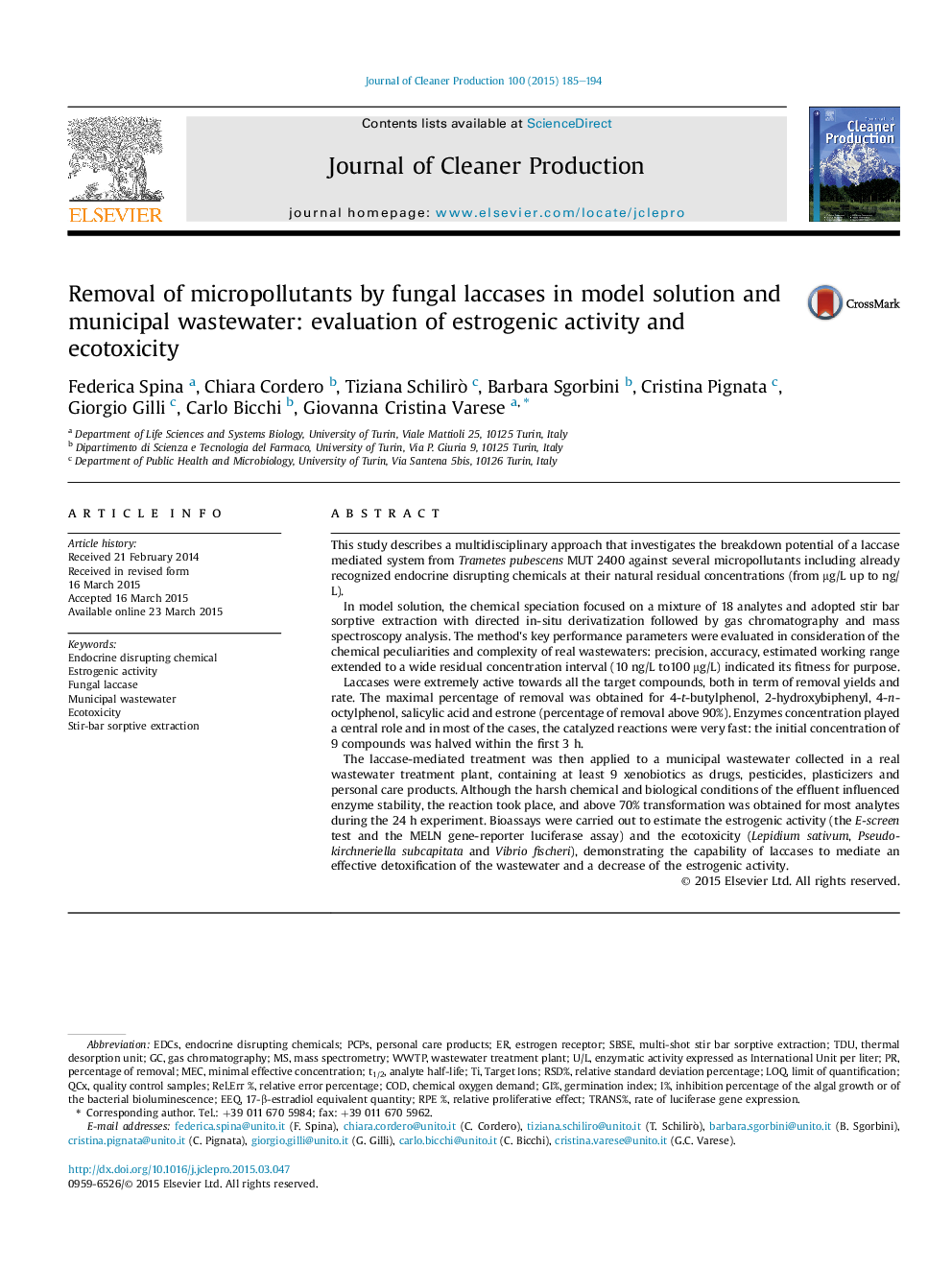| Article ID | Journal | Published Year | Pages | File Type |
|---|---|---|---|---|
| 8103971 | Journal of Cleaner Production | 2015 | 10 Pages |
Abstract
The laccase-mediated treatment was then applied to a municipal wastewater collected in a real wastewater treatment plant, containing at least 9 xenobiotics as drugs, pesticides, plasticizers and personal care products. Although the harsh chemical and biological conditions of the effluent influenced enzyme stability, the reaction took place, and above 70% transformation was obtained for most analytes during the 24Â h experiment. Bioassays were carried out to estimate the estrogenic activity (the E-screen test and the MELN gene-reporter luciferase assay) and the ecotoxicity (Lepidium sativum, Pseudokirchneriella subcapitata and Vibrio fischeri), demonstrating the capability of laccases to mediate an effective detoxification of the wastewater and a decrease of the estrogenic activity.
Keywords
U/LLOQRSD%WWTPEEQPCPsSBSEMECEDCst1/2Wastewater treatment plantchemical oxygen demandEcotoxicityGermination indexendocrine disrupting chemicalMass spectrometryMunicipal wastewaterEstrogenic activityFungal laccaselimit of quantificationPersonal care productsStir-bar sorptive extractionEndocrine Disrupting Chemicalsquality control samplesCodGas chromatographyEstrogen receptor
Related Topics
Physical Sciences and Engineering
Energy
Renewable Energy, Sustainability and the Environment
Authors
Federica Spina, Chiara Cordero, Tiziana Schilirò, Barbara Sgorbini, Cristina Pignata, Giorgio Gilli, Carlo Bicchi, Giovanna Cristina Varese,
